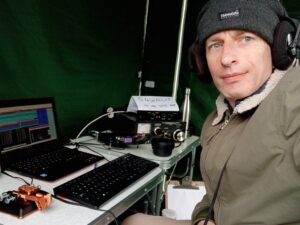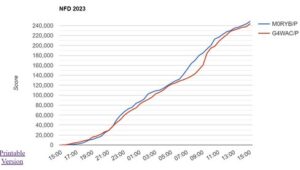A year in the Life of Wythall Radio Club
SOMETIMES IT TAKES AN AGM TO REMIND MEMBERS OF THE ACHIEVEMENTS OF THE PREVIOUS YEAR ,
AND SO IT CAME TO PASS THAT CLUB CHAIRMAN, CHRIS G3YHF REMINDED US.
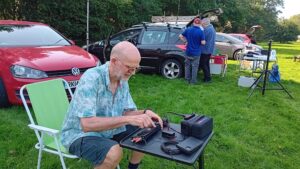
The chairman in his natural habitat: out doors and portable!
An abbreviated version of his report follows
NOVEMBER ‘How low can you go?’ asked CW/QRP obsessive 2E0XET and a week was spent on low power , highlighting the ever popular FT817/8 and the Wonder Whip.. Kev on the South Coast reporting his results on the reflector.
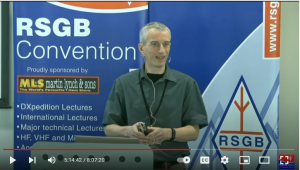
Lee addressing the RSGB Convention.
Later in the month Lee G0MTN gave a presentation to the RSGB Convention on HF antennas and repeated this for the benefit of Club members at one of our regular Tuesday night meetings.
DECEMBER: Lee G0MTN hosted several members at his well-equipped contest station to use the special call G5AT in the 10m SSB/CW Contest. (G5AT celebrating the first European amateur contact with the USA in 1922.)
MARCH: The Club hosted a lively and fun evening for the local Beaver colony: Roger M0WGM ran a phonetics session using licence-free handhelds, John 2E0XET and Chris G3YHF inducted the eager Beavers into the mysteries of Morse Code and Les 2E0LRV stole the show setting up a digital voice link enabling the Beavers to talk to amateurs in Seattle.
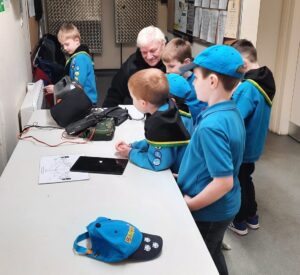
Les and the eager Beavers at the March Event- with Seattle at the other end of the line.
APRIL: We put GX4WAC on the air on a Tuesday night to celebrate World Amateur Radio Day.
JUNE: GB0BUS was a special event station at the Transport Museum Wythall to celebrate International Museums’ Weekend. A team of 9 members erected 2 wire aerials for HF with Dave G3YXM again impressing with his catapulting skills. The team had QSO’s with stations in 20 countries with the best DX being Texas. Ian M0LQY’s FT8 operation attracted a steady stream of visitors and the weather stayed kind.
AUGUST: Chris G0EYO took on the challenge of coordinating the many responses to the OFCOM consultation regarding amateur radio regulations. Thanks also to Chris for the tremendous amount of work updating and spring cleaning the Club’s website: an onerous task and long overdue.
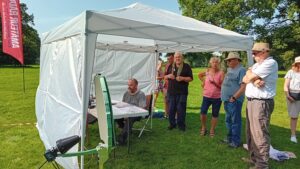
Neil and some fascinated onlookers
SEPTEMBER: Our Plug and Play in the Park involved 12 members setting up portable stations : Phil 2E0WTH and Peter M5DUO disappeared into the shade of the trees in what turned out to be improbably the hottest day of the year. Neil G1TZC QO100 portable satellite station impressed the many visitors and included a contact with the St Helena’s island in the South Atlantic Ocean. A few days prior to the Plug and Play Ian M0LQY and Clive 2E0IKN hosted a ‘come and meet us’ evening with aim of attracting several potential new members.
OCTOBER: Clive 2E0IKN and Chris G3YHF gave a talk on SOTA, POTA and WWFF schemes highlighting the attraction of the great outdoors and amateur radio.
OTHER EVENTS IN THE YEAR
Meanwhile Lee’s G0MTN ever popular DXCC Challenge has continued with some great DX worked particularly the stand out performance of M0IFT (216 countries); as we approach the peak of this sunspot cycle expect scores to rocket!
The ever competitive Christmas and Easter Contests have continued ,, expertly run by Lee G0MTN. The Easter All band winner was Chris G0EYO and, appropriately the 2 metre/70cm section was won by Jim 2E0BLP.
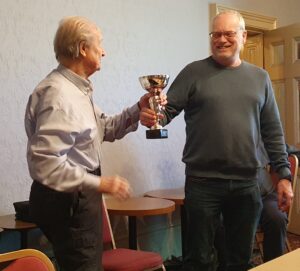
Don G0NES receiving the Christmas Trophy (All bands/all modes) from Club President Mike G4VPD
In the Christmas Contest Ian M0IDR won the 2m/70cm Trophy and Don G0NES won the all modes Trophy.
An effort has been made by John 2E0XET to regularly update the Club’s website and Radcom has been provided with a steady stream of Wythall Radio Club reports and photos.
Other achievements during the year include Neil G1TZC’s great success with with his QO100 satellite operation and his bronze award for working 50 DXCC . G0MTN was just pipped into place second place in the QRP unassisted portable section of National Field day but at the time of writing in the CQ WW RTTY contest the raw scores suggest he may be the leading European operator in the single operator, all band , low power category: some achievement.
Clive (ex M7OCB) is now 2E0IKN and studying hard for his full licence. Chris G0EYO has dusted off his CW skills through regular schedules with John M6KET and thriving with both straight key and paddle.
Sadly the Club lost two of its much loved and longstanding members with the passing of Vic M0AEJ and Jim 2E0BLP. Vic joined the Club in the 1990’s and was always very supportive of the rallies and field days; he was always there as a volunteer and highly dependable: a wonderful member of the Club Jim, the Voice of the Midlands, was a big presence in the Club a mainstay of the Easter and Christmas Contests and a regular at our Plug and Play events; he was also a regular on the club frequency 144.225 , often chatting to Peter M5DUO whilst mobile on the way to work: both will be very much missed.
and so what of the next year?
Well for starters..
TUESDAY 7TH NOVEMBER.. THE VENUE : THE DARTS ROOM AT WYTHALL HOUSE. THE TIME 8.00 P.M..
AN ACTIVITY EVENING FEATURING THE CLUB EQUIPMENT (AND OTHER ) WORKING DIGI MODE , HF, CW AND SSB.
NEW MEMBERS AND INTERESTED PARTIES VERY WELCOME TO ATTEND
COME ALONG AND MEET OUR EVER OBLIGING CLUB MEMBERS!!


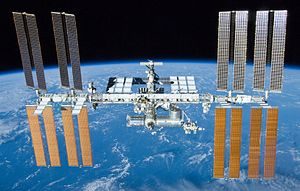
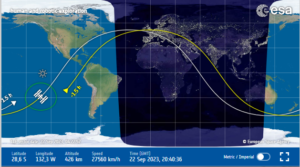
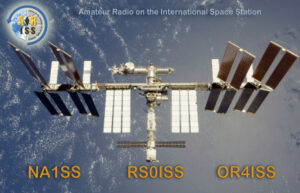
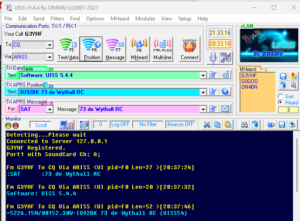
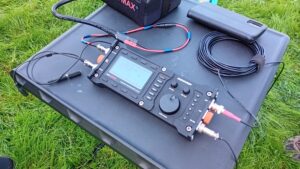
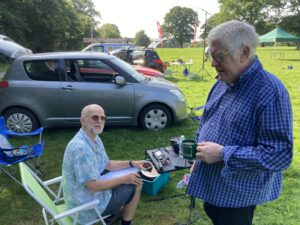
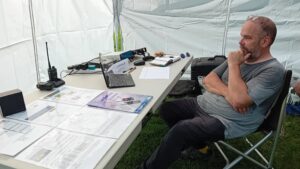
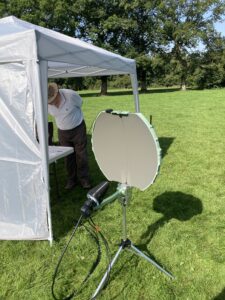
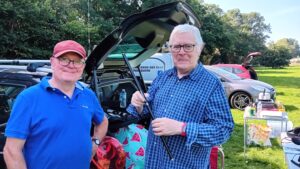
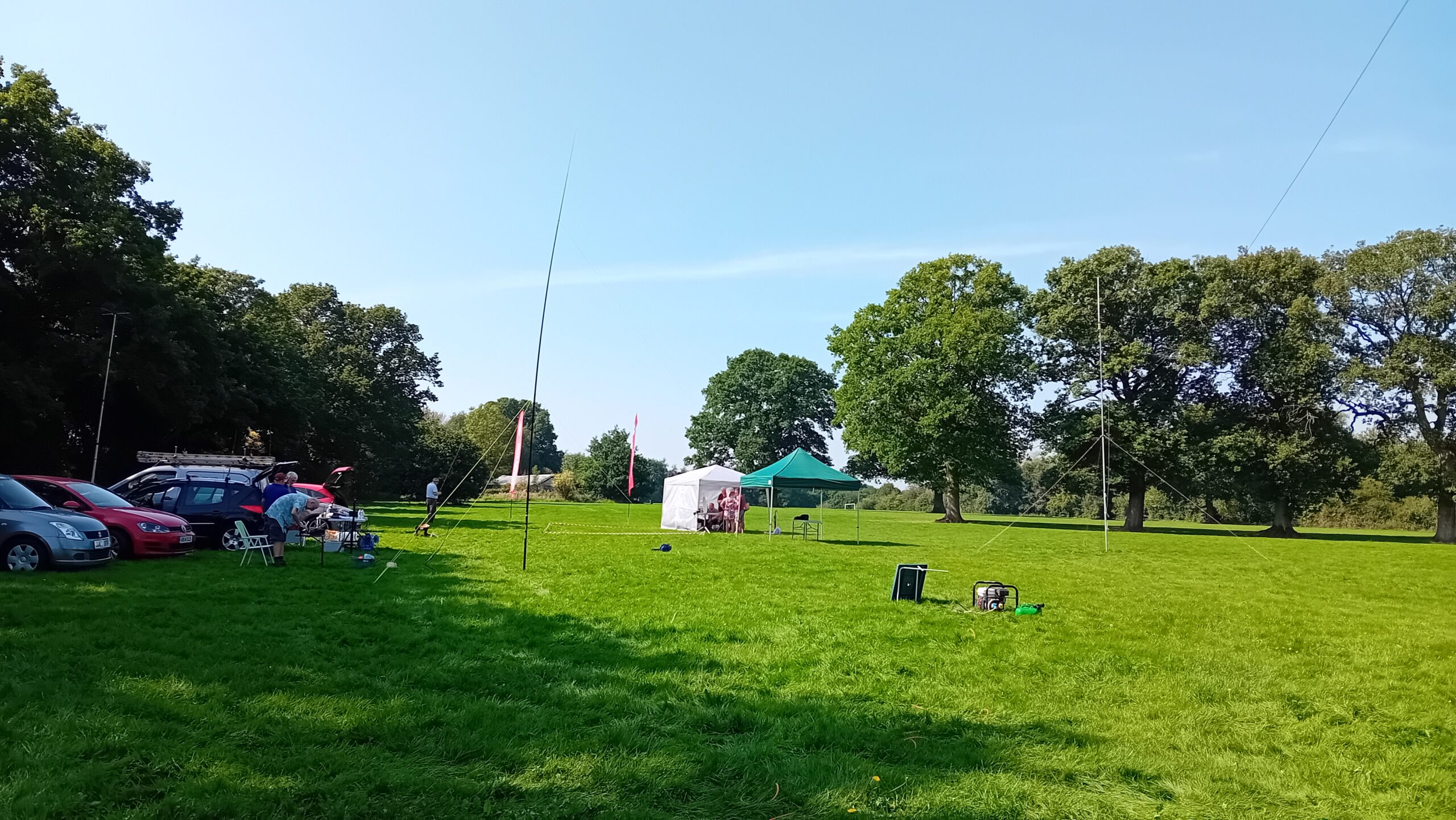
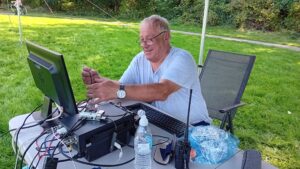
 Visitors welcome at Wythall Radio Club’s free demo of short-wave and VHF radio communication, on Saturday 9th Sept. between 10 and 3.
Visitors welcome at Wythall Radio Club’s free demo of short-wave and VHF radio communication, on Saturday 9th Sept. between 10 and 3.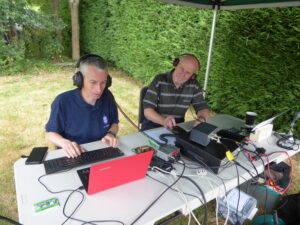
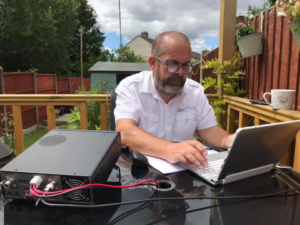
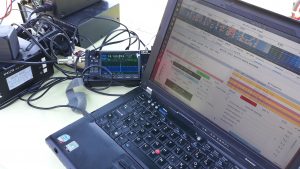 Thanks to the internet, it’s possible to listen on amateur radio frequencies without a special short wave receiver.
Thanks to the internet, it’s possible to listen on amateur radio frequencies without a special short wave receiver.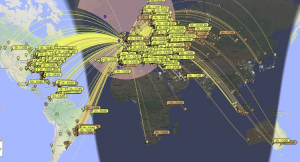 CALL SIGNS
CALL SIGNS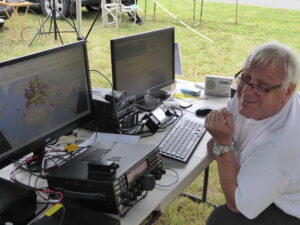 Visitors welcome at Wythall Radio Club’s famous ‘Plug and Play’ event on Saturday 9th Sept. between 10 and 3.
Visitors welcome at Wythall Radio Club’s famous ‘Plug and Play’ event on Saturday 9th Sept. between 10 and 3.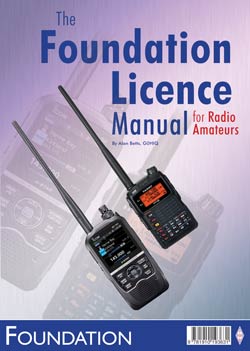 The open evening is on Tuesday 5th Sept. from 8-9pm in the Darts Room, on the ground floor of Wythall House. Follow the signs.
The open evening is on Tuesday 5th Sept. from 8-9pm in the Darts Room, on the ground floor of Wythall House. Follow the signs.